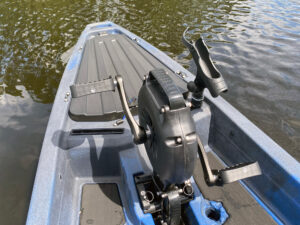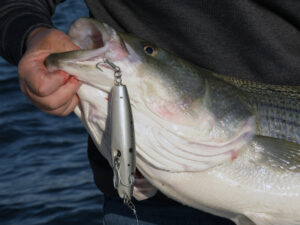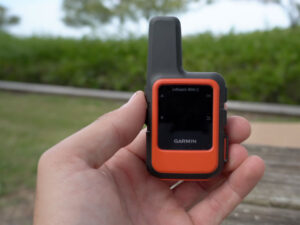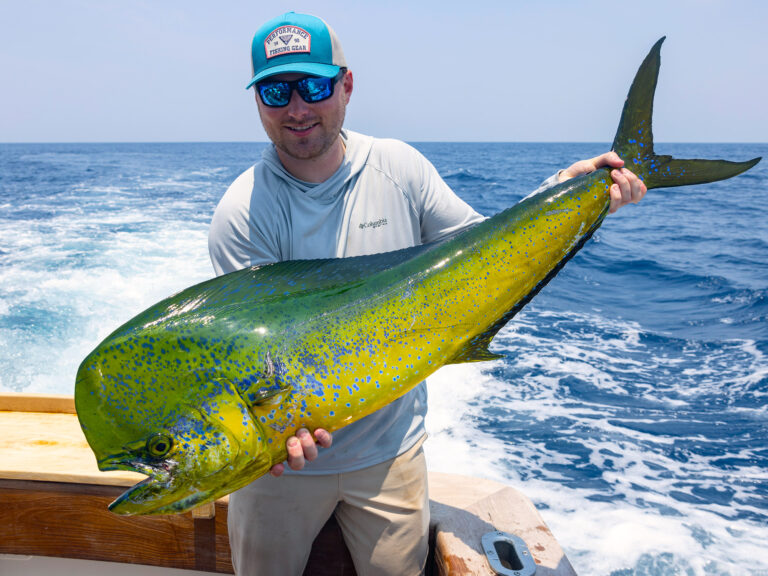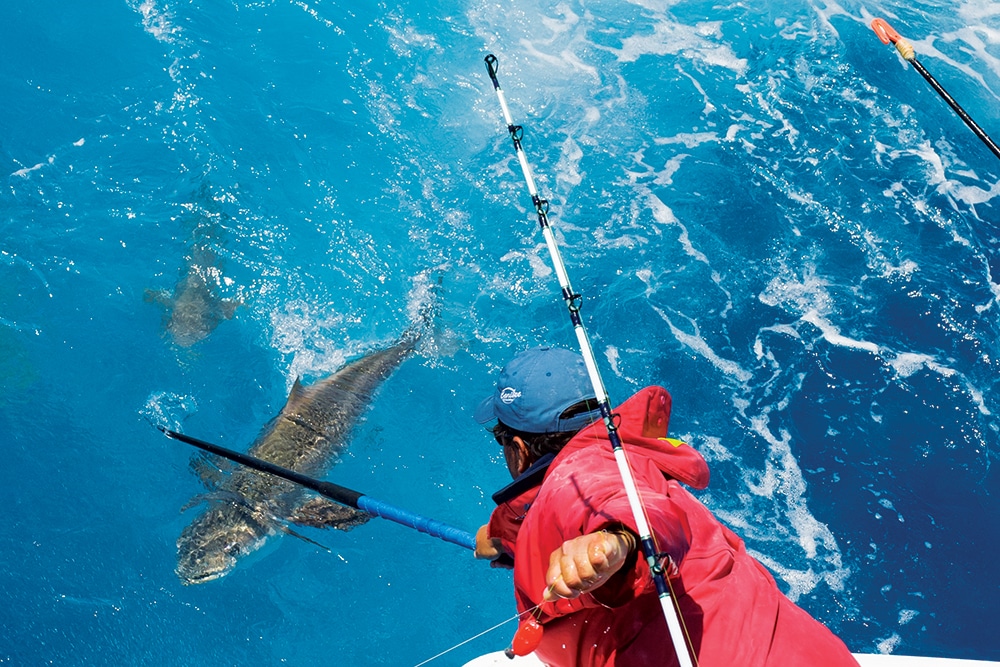
Give ‘Em the Hook
Hanging over the side of the boat with my camera, I watched a Louisiana captain pierce an energized yellowfin tuna, only to have the fish tear the gaff from his hands in a desperate attempt to flee. I won’t mention the captain’s name, but both he and I sat stunned, wondering what we had just witnessed.
“That was a $200 gaff!” he yelled, breaking the silence.
To be honest, the experienced captain’s slip-up was not from using the wrong gaff, but instead because he wasn’t wearing fishing gloves to better grip the handholds. Still, I used his recent experience as a catalyst to investigate the marketplace for quality gaffs and to identify the best situations to utilize them. Fishing gaffs come in a variety of lengths, materials, designs, and hook sizes, allowing anglers to pick specific models for their preferred fishing style and vessel.
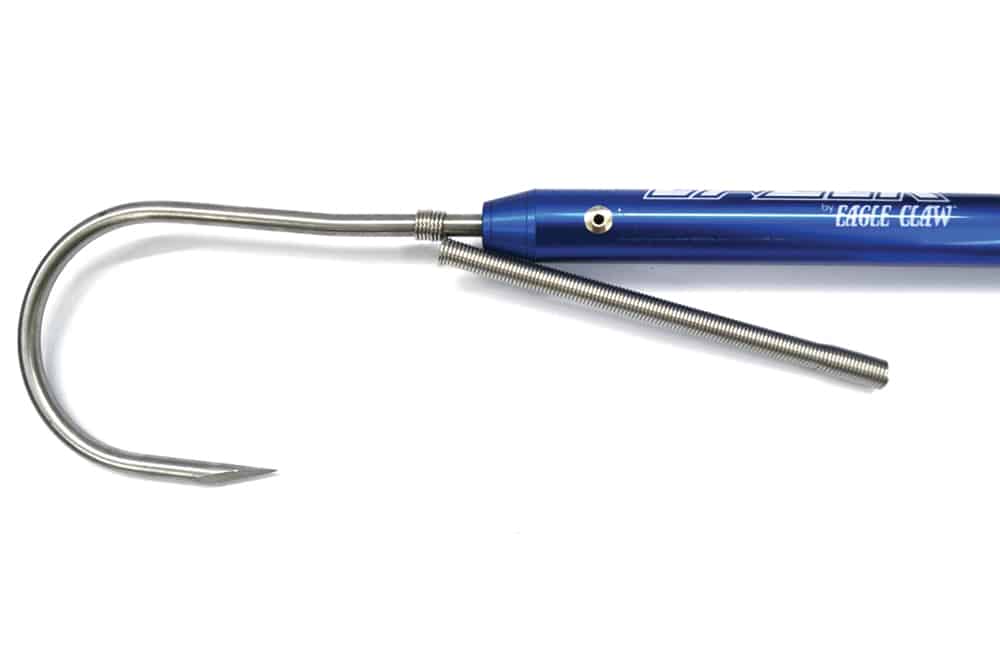
The Best Fish Gaff Length
“The length of the gaff is critical, predicated on the species targeted and the configuration of the boat,” says Don Hutson, a fishing group sales manager at Bass Pro Shops. “A 5-foot gaff with a 3-inch hook is popular for species like dolphin and kingfish, even cobia.”
Modest gunwale heights on most sport-fishing boats mean anglers can reach fish fairly easily; 4‑ to 6-foot gaff handles are just the right length to touch water in 25- to 40-foot boats.
“Handle lengths have a lot to do with boat size and personal preference,” says Greg Stotesbury, AFTCO’s sales manager. “Shorter gaffs are easier to store and handle, but their shorter length requires the gaffer to wait for a close, clean shot. Many boats have storage issues with gaffs longer than 6 feet.”
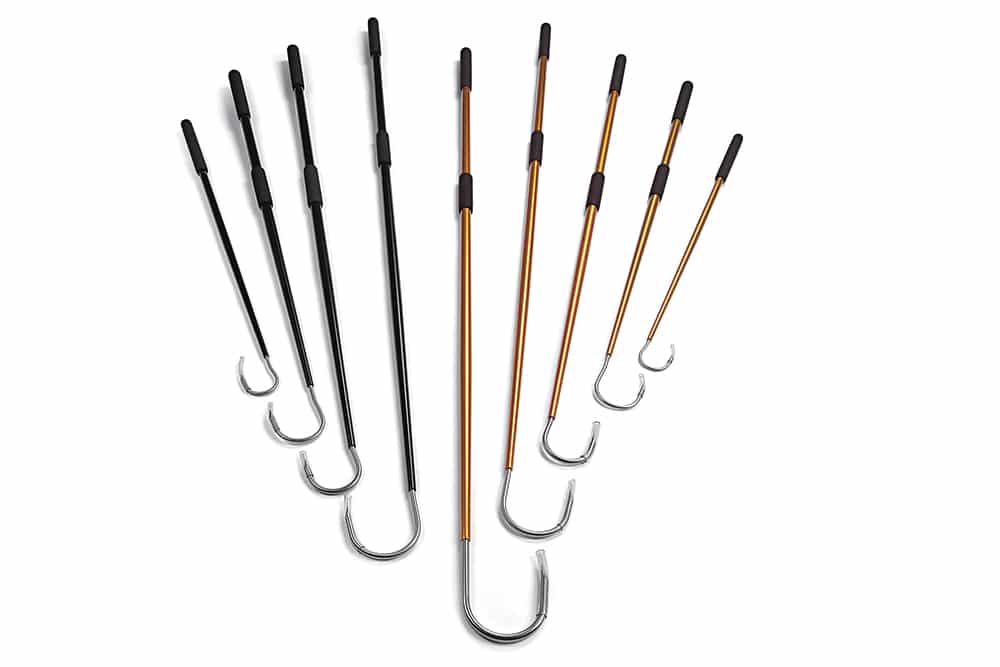
Fishing gaff hooks range in size, but the most versatile models are those with the gap measuring 2 to 4 inches with hooks manufactured from stainless steel. Quality stainless steel gaff hooks emphasize corrosion resistance and tensile strength. The gauge of the gaff hook is directly related to the size of the fish targeted.
Sea Striker produces simple hand gaffs to 12-foot tournament kingfish models, featuring 2- to 4-inch hooks. Berkley’s gaff measures just 3 feet, built with featuring a black aluminum pole and stainless-steel hook. Eagle Claw has four gaffs, ranging from 2- to 6-footers, utilizing 2- and 3-inch hooks.
All gaffs feature a solid handhold, whether that’s foam grips, tuna-cord wraps or a wrist lanyard. With any of those, gloves still help mitigate a slimy, wet handle during critical moments at the gunwale.
AFTCO’s two most popular fishing gaffs are 4- and 6-footers with 4-inch gaff hooks. “They are the two most popular sizes for gaffing tuna, probably the most commonly gaffed fish,” says Stotesbury. “The 4-inch hook gets a big bite of flesh, which makes it difficult for the tuna to pull off or open the hook.”
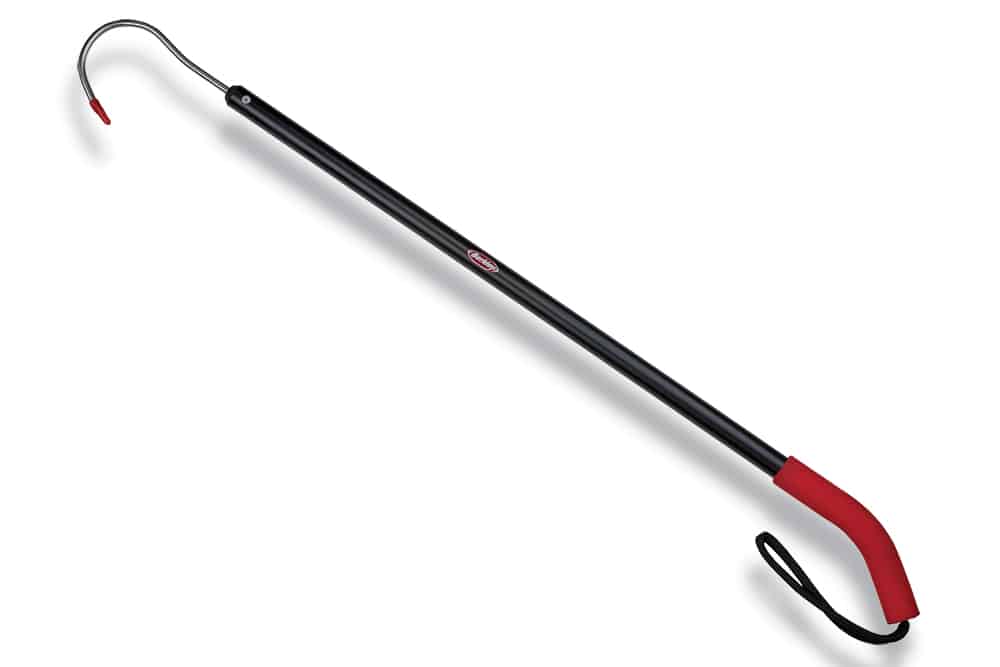
Fishing Gaff Material
Most companies make gaff handles from aluminum or fiberglass. Pound for pound, aluminum and fiberglass gaffs possess very similar strengths, and both can last for many years.
Anodized-aluminum gaffs are basically standard issue on charter boats these days, whether they’re coated in black, gold, silver or blue. “We tested our aluminum gaffs in salt-spray chambers for more than 552 hours, resulting in minimal corrosion,” says Colleen Hopwood, of Eagle Claw.
Most quality gaffs feature a tapered handle, such as Offshore Angler’s Tapered Gaffs. The butt section is fatter, with a grip for strength, and slims down toward the hook point for less resistance in the water.
Often gaff-handle material comes down to the fisherman’s preference. Some prefer that rich anodized look of aluminum, while others like the old-school fiberglass feel of cord-wrapped handles, says Stotesbury.
“Fiberglass AFTCO gaffs are 20 percent lighter than the aluminum gaffs, and their thick-walled E-glass construction makes them extremely durable and flexible,” he says. “Fiberglass gaffs are more forgiving and flex easily without bending or breaking.”
Certain fishing gaffs float if accidentally dropped overboard. But a floating gaff isn’t the silver bullet it appears to be. “In many cases, gaff handles don’t displace enough air to give them positive buoyancy — we would have to have much fatter handles and smaller hooks to get all of our gaffs to float,” says Stotesbury. “Slender gaff handles are much more functional than fatter models.”
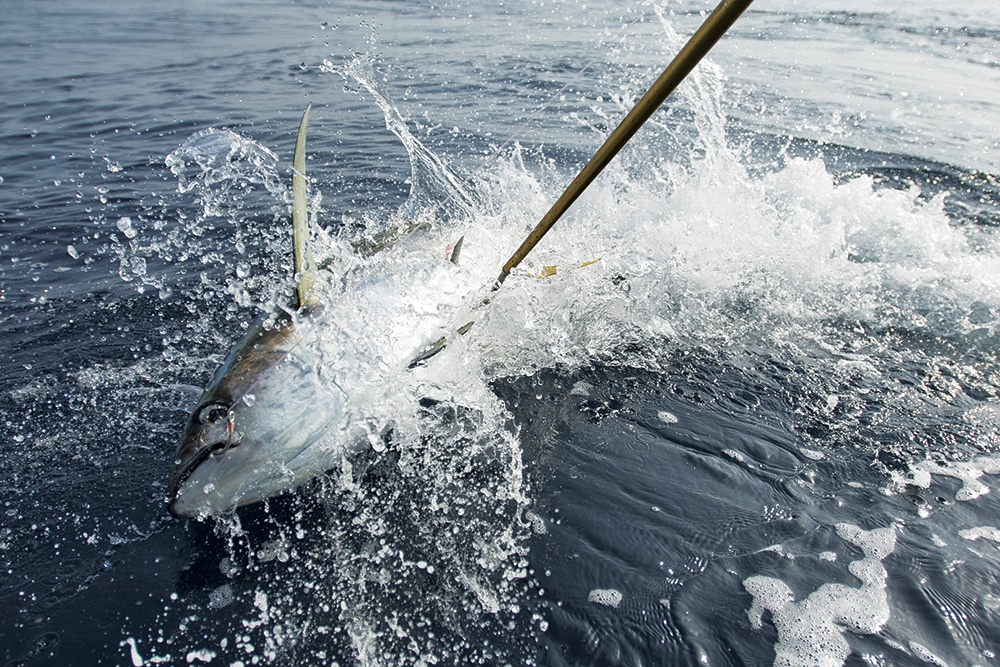
Different Fishing Gaff Hook Designs
Besides the typical round-bend style, other gaff-head designs — such as the diamond-shaped hooks made by Top Shot Tackle and West Marine’s Blacktip — have gained advocates.
“The Australian-style squared gaff hook forces fish to sit in the gap, and fish won’t fall out, which happens at times with barbless round-bend gaffs,” says Capt. Rick Constantine, vice president of Acme United, manufacturers of Cuda and West Marine’s Blacktip tackle. “The Blacktip Hydro-Flow gaff has an offset handle and holes in the aluminum so anglers don’t fight against the water.”
Tournament kingfishermen often utilize 8- and 12-foot gaffs, especially when prize money is up for grabs. “The extra length gives anglers more reach, decreasing the chance of losing the fish on a final run,” says Hutson. Handle material is usually fiberglass, lighter and more flexible, coupled with hook sizes measuring just 2 to 3 inches.
Offshore kayak fishermen tend to use harpoon-style gaffs to subdue fish. “Using a kage (spear) gaff, there are no turns in the hook, which makes it easy to hit the right spot,” says Eric McDonald, owner of Deep Blue Kayak Fishing. “With a traditional gaff, you need to pull it toward you, while a kage gaff gets pushed away, much better for balance in a kayak. Still, carry a hand gaff to pull fish onto the kayak.”
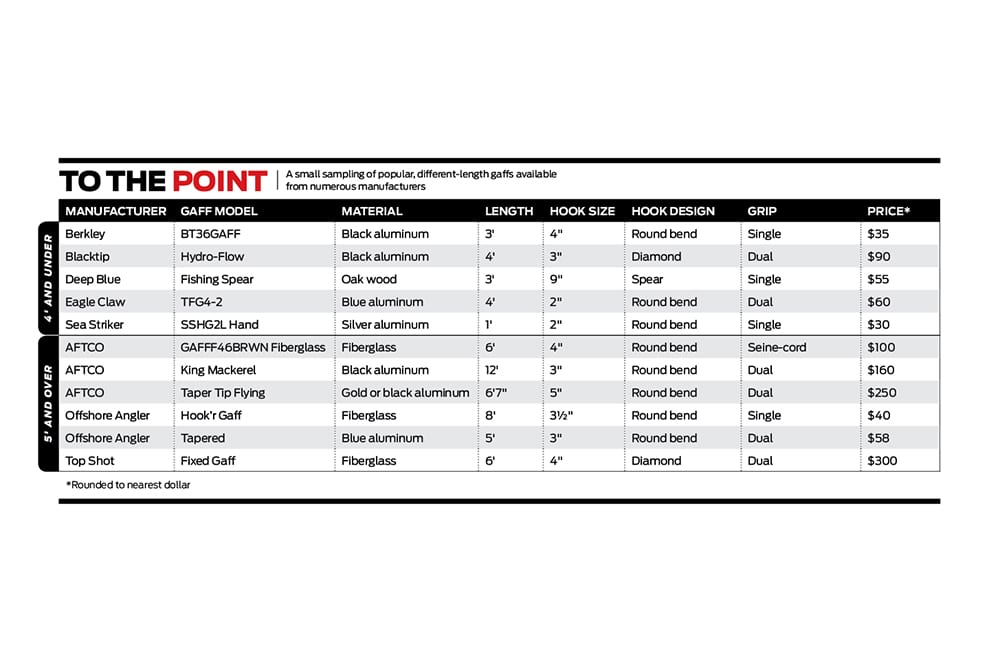
Give ‘Em the Hook
Flying gaffs are used by experienced offshore fishermen for fish in the 200- to 500-pound range, and beyond. Tie the hook’s rope to a reinforced boat cleat or buoy float to tire the fish further before bringing it inside the boat. “Flying gaff hooks should be selected to be one-third the width of the potential fish to be gaffed,” says Stotesbury. “Using rough guidelines, a fish that’s about 2 feet in width needs about an 8-inch hook.”
A gaff is like a claw hammer: It’s a very simple tool that will last for many years, explains Stotesbury, but if you gaff fish that are not ready, lever the handle against the gunwale or boat’s chine, or use the wrong-size gaff, expect to have some failures.

